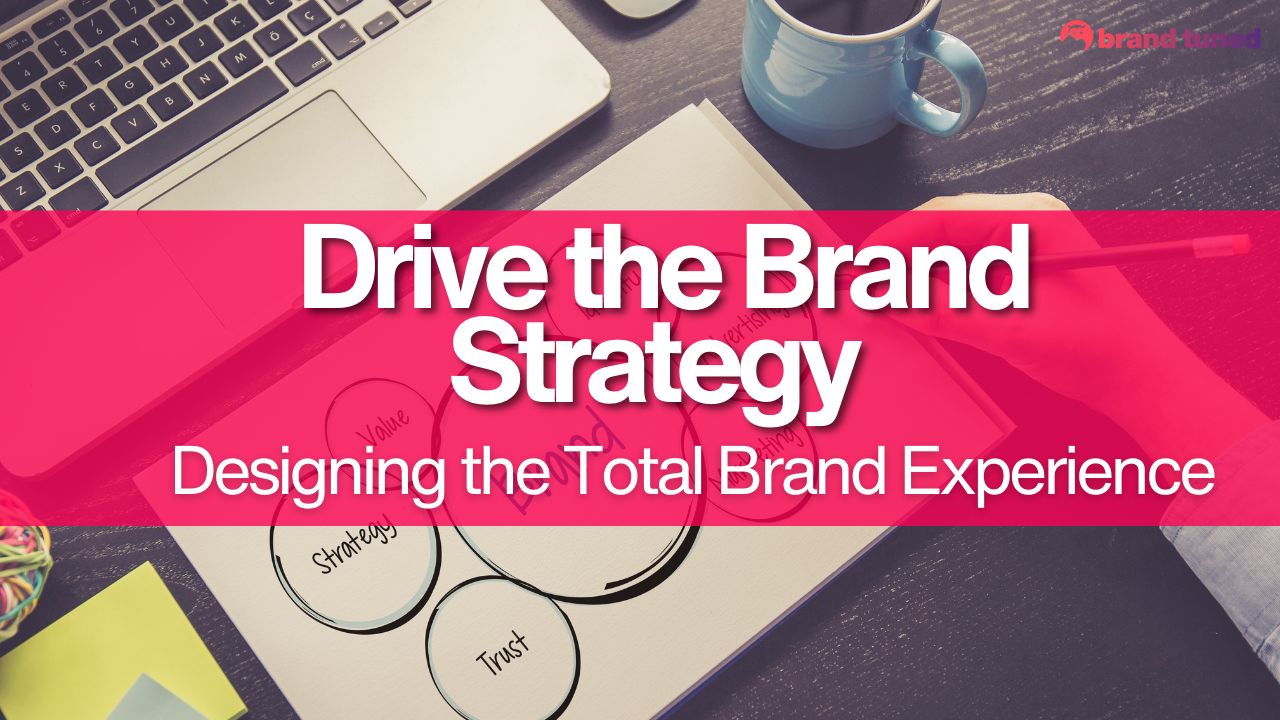Drive the Brand Strategy — Designing the Total Brand Experience
Aug 04, 2021
Branding takes time to bed in. Once you have established your brand strategy and designed your visual identity, your ongoing efforts to build the brand should focus on one thing: to run the business in a way so you become known day by day for the two or three positioning attributes you decided upon.
The way you manage your brand should bear in mind the importance of how you treat customers and others and deliver your product or service. Think about minute details in how the business is run. Look at the various touch points of the customer journey to decide what you could do at each stage when delivering your product or service to reinforce your message to your target customers, so you become known in the ways you aspire to be known.
This is how you stand a chance of becoming a trusted source for what your brand sells. You will need to convey and fulfil your implicit brand promise, so you become known for reliably meeting and delivering that promise.
You will want to specify the marketing objective for your advertising, so that the brand develops in desired ways. Having clarity around what you want the advertising to achieve is critically important.
Activate the brand
Once your brand is ready to launch, activate it by opening a dialogue with customers about your product or service offering, so you create an emotional connection and awareness that
your new offering exists. People are often attracted to new things, so try to capitalize on that novelty value. Generating buyer interest about whatever your new product or service or business does is the heart of activation. Maybe you will launch by providing samples, to allow consumers to use your product or experience your service. Such experiential campaigns are designed to get people talking about the brand, so they form a strong impression of it early on. Getting exposure and media attention is key.
PR is often an important component of brand activation. It helps you work out how to attract press interest, so that one or more publications relevant to your target market run a story about the brand. Having a strong PR strategy in place ensures maximum coverage and helps give your brand a boost.
Bear in mind that brands are fluid and ever changing. Nothing stays the same. The paradox of branding is that you must change to stay consistent. Your ongoing efforts to build brand awareness should focus on becoming known for reliably meeting and delivering on your brand promise. It is about creating a unique and lasting presence in the marketplace, so the business operates in accordance with your values and becomes a trusted brand.
You need to communicate a consistent brand story, build community, and make an emotional connection to your audience.
Consider the brand-building possibilities open to you when creating your marketing plan and decide how to allocate your budget between the various types of digital marketing and offline
activities relevant to your business, such as:
- Search engine optimisation and content marketing
- Social media marketing
- Email marketing
- Paid advertising
- Networking, speaking, guesting on podcasts, and other offline methods
Customer Touch Points
Consider the touch points in your customer’s typical journey where they meet your brand. What could you do to add to the customer’s experience of the brand at each point? How might you reinforce the brand promise in the way you handle customers?
If you have met your brand promise, but the customer was expecting something else, there is a mismatch between expectations, and customers will be disappointed. That is why it is
critical to not just meet your own bar, but also to manage the customer’s expectations. Depending on what you sell, it might involve asking the customer at the beginning of the process, even before they buy, a few questions to establish what they expect from the service.
Apple’s Customer Experience
Apple is a company that has a relentless focus on the customer experience. Its brand value has been achieved through consistently creating products and services that work better than those of its immediate competitors. Apple employees are focused on ensuring customers leave the Genius Bar with their product working as it should, feeling well looked after.
The company’s goal of designing the very best products can mean Apple has created an enviable reputation for itself. As Sir Jonathan Ive, Apple’s design head put it: ‘If we manage to do that then there are a number of consequences. People will like the product, hopefully, they’ll buy the product, and then we will make some money… The goal isn’t to make money, the goal is to try to develop the very best product.
Brand Guidelines
Your brand guidelines should be a resource insofar as they cover how to use the brand elements consistently in everything you do – advertising, marketing activities, internal communications, recruitment and hiring – everything. Your brand needs to be consistent to ensure that each new exposure to the brand builds on the past, and your distinctive brand asset links strengthen in memory, making it easier for the category buyer to identify the brand in any situation.
Sign up to the Brand Tuned newsletter for insights into how to create a more successful brand.

